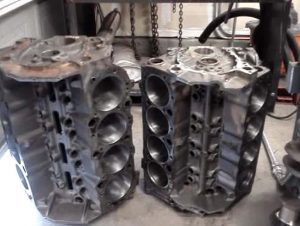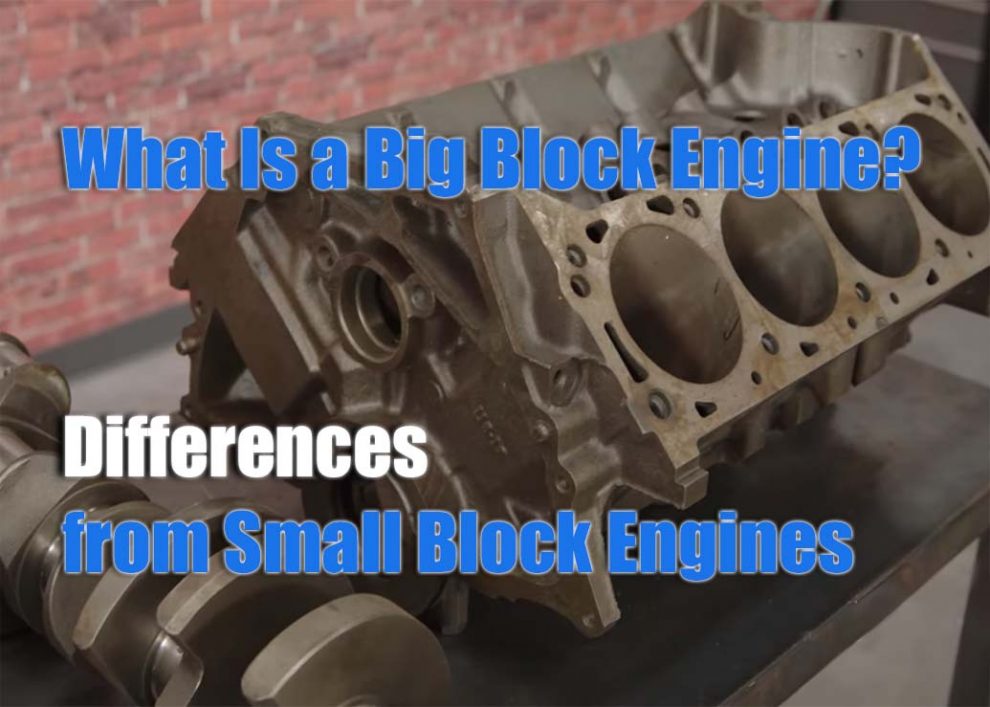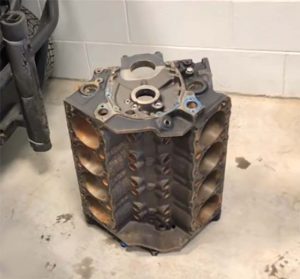This article provides an overview of big block engines, explaining what they are, how they differ from small block engines, their history, why they are called “big block,” their pros and cons, applications where they are used, and a conclusion.
The terms “big block” and “small block” refer to different engine designs, primarily for V8 engines installed in American performance cars and trucks. The main difference lies in the size or displacement of the engine block, but there are some other key distinctions as well. Small block engines generally range from around 4 liters to 5.7 liters of displacement. Big block engines start around 6 liters and can be over 8 liters or more in displacement size. In simple terms, big block engines are physically much larger and heavier than small block engines.
Key Differences between Big Block and Small Block Engines
There are several noticeable ways that big block engines differ from small block engines in their design and specifications:
-
Displacement/Cubic Inches: Big block engines usually start at around 370 cubic inches and often exceed 500 cubic inches. Small blocks are generally less than 400 cubic inches. This means big blocks have a higher capacity to generate power.
-
Physical Size: As the names suggest, big block engines have much larger engine blocks. Their external physical size is significantly bigger and bulkier than small blocks.
-
Weight: Due to their robust structure and thicker metal components, big block engine blocks tend to weigh much more than small blocks. An iron big block can weigh over 250kg more than a comparative aluminum small block.
-
Deck Height: Big blocks have taller decks averaging around 10.2 inches, while small blocks have deck heights of 9 inches or less.
-
Bore Spacing: The space between cylinder bores is typically wider on big block engines compared to small blocks. This allows for larger bore sizes.
History of Big Block Engines
 The origins of big block V8 engines began in 1958 when Chevrolet introduced the first big block engine design of over 350 cubic inches — the 348 truck engine, followed by the 409 in 1961. Chrysler also unveiled its first big block “B” engine in 1958. Big block V8 engines really took off in popularity during the rise of muscle cars in the 1960s and early 1970s. Nearly every major American automaker developed many iconic big block V8s during this period that were installed into high performance cars and trucks.
The origins of big block V8 engines began in 1958 when Chevrolet introduced the first big block engine design of over 350 cubic inches — the 348 truck engine, followed by the 409 in 1961. Chrysler also unveiled its first big block “B” engine in 1958. Big block V8 engines really took off in popularity during the rise of muscle cars in the 1960s and early 1970s. Nearly every major American automaker developed many iconic big block V8s during this period that were installed into high performance cars and trucks.
Some of the most famous big block engines that came out during the muscle car era include:
- Ford FE series 332, 352, 390, 427, 428 engines
- Chrysler Hemi 426, 440, 455 engines
- General Motors Mark IV 396, 402, 454, 502 engines
Both car enthusiasts and professional racers embraced the tremendous performance potential of these large, powerful engines throughout the latter 20th century. Big block V8 engines left an enduring legacy and are still used today for racing, hot rods, custom muscle cars, and trucks.
Why Are They Called Big Block and Small Block?
The “big” and “small” designations originated from the physical size difference between the two engine block types. When viewed side-by-side, big block engines have much larger, bulkier engine blocks and cylinder heads than the more compact small block platforms. Beyond base architecture, there can be many cubic inch variants within each engine family — but their external structure and deck/bore dimensions set them firmly into either the big block or small block category. So while displacement and horsepower numbers may vary, the larger scaled big block design dictated the “big” naming while small block represents the smaller form factor by comparison.
Pros and Cons of Big Block Engines
Big block engines have some important advantages that made them extremely popular for high performance vehicles:
Pros:
- Huge power potential reaching up to 800+ horsepower
- Abundant torque output perfect for towing or hauling
- Larger displacement capacity up to over 800 cubic inches
- Designed for extreme durability and strength
- Iconic muscle car heritage and legendary status
However, big block engines also come with some definite disadvantages primarily related to their size and weight:
Cons:
 Very heavy and bulky reducing vehicle handling
Very heavy and bulky reducing vehicle handling- More complex installation and modifications
- Typically poor fuel efficiency and economy
- Increased stress on other drivetrain components
- Often require wider chassis and engine bays
In essence, big block engines deliver brute force power at the expense of nimbleness and efficiency. Small block engines are lighter, easier to install, and get better fuel mileage — but they can struggle to match the peak horsepower and torque from modified big blocks.
Applications and Examples of Big Block Engines
During their peak muscle car popularity, big block V8 engines could be ordered directly from the factory installed in high performance coupes and sedans including:
- Chevrolet Corvette, Camaro, Impala SS
- Ford Mustang Boss and Shelby GT series
- Dodge Charger, Challenger, Coronet R/T
- Plymouth GTX, Road Runner, Superbird
- Pontiac GTO, Firebird, Catalina 2+2
Today, restored or restomoded classic muscle cars are still potent performance machines thanks to their big block powerplants. Many auto enthusiasts also swap big block engines into hot rods or custom street machines for their massive performance. On the truck side, big block V8s were factory installed in pickups like the Ford F-Series, Dodge Ram SRT-10, and GM 2500 HD models where stump-pulling torque for towing and hauling was more important than fuel efficiency.
Some top racing series still utilize near-1,000 horsepower big block V8 engines for Top Fuel Dragsters and NASCAR stock cars at oval circuits and drag strips. Marine applications are another niche for specialty big block engines in offshore powerboats and performance watercraft. In our other article, you can read more about Best Cold Air Intake for Jeep Liberty to further improve engine performance.
Conclusion
In the world of high performance V8 engines, “big block” refers to a robust, large-displacement engine design that contrasts against the smaller, more nimble “small block” engines. Big block engines range up to over 800 cubic inches displacement and can generate extreme horsepower beyond 1,000 hp. They earned their legendary reputation accelerating Detroit’s factory muscle cars during their 1960s/1970s heyday and powering race winners in motorsports. This brute force comes at the cost of substantial weight and size penalties. Nonetheless, big block V8 engines hold an endearing spot in automotive history and car culture that continues today. Their towering power leaves a lasting big block impression for good reason.


 Very heavy and bulky reducing vehicle handling
Very heavy and bulky reducing vehicle handling
Add Comment